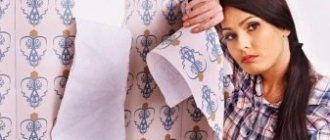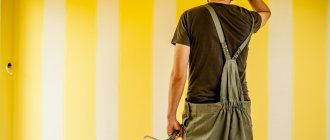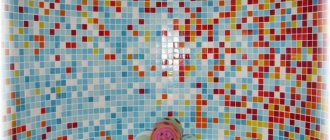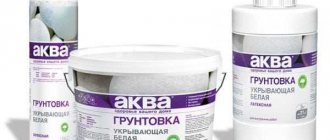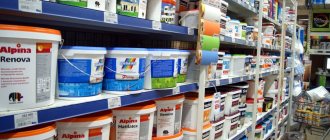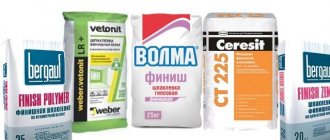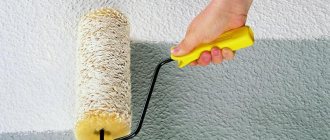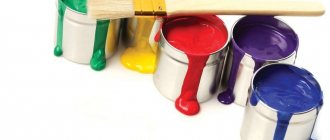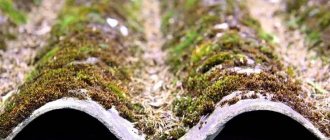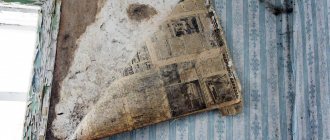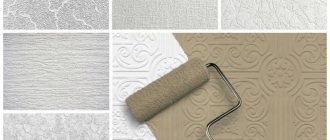Pros and cons of painting
For gluing, you do not need to carefully prepare the coating.
Embossed wallpaper, for example, will hide imperfections and roughness. But for subsequent painting, wall treatment will be required. Ignoring this rule will lead to peeling and cracking. But at the same time, if residents want to change the decor and paint the wallpaper a different color, then the new solution will fit normally on the old coating. The dyes are made hypoallergenic and environmentally friendly. Not least because of this, people began to abandon wallpaper on an unnatural basis. But after the invention of canvases based on algae, bamboo, raffia, reed, paints with chemical compounds are already harmful in the sense that they “interrupt” the properties of the environmentally friendly coating. The way out of this situation is to paint only with natural pigments. A noticeable disadvantage of painting is expressed in the low resistance of surfaces to contamination. We are talking about fatty traces and stains. Benefits of coloring:
- interior improvement;
- hiding wallpaper imperfections;
- wide choice of colors and the ability to change them.
Wallpaper coloring technology
When painting, use the following methods:
- For any surfaces. The paint is applied in an even layer. For wallpaper to be painted with texture, a fleecy roller is used, and for smooth wallpaper, a regular roller is used. After this, a break is made for 24 hours to dry the first layer. Only after this the next one is applied.
- For embossed ones. The paint is applied with a velor roller so that it “takes” only the surface of the design, while the base remains the same color. Or use two types of roller with a break to make a pattern of different colors.
- For non-woven fabrics with a vinyl surface. The paint is applied in one layer and then rubbed with a cloth until it dries. The result is an interesting coloring with streaks.
Tip: You can use not only different colors, but also paint with different degrees of reflection. For example, combine glossy and matte paint.
Interior design options
Any city apartment begins with a corridor. Even if guests come very rarely, the postman, the person who checks the meter readings, or the social worker rings the doorbell at least once a month. Therefore, the hallway should create coziness, and wallpaper plays a very important role in this.
From a design point of view, it is best to use light-colored paint in the hallway; the room will not look like a closet. Wall lamps and a glossy floor will complement the composition.
The second most important, and therefore no less important, is the living room in the apartment. This is where guests and household members spend most of their time
They rest, have tea and spend the night. Therefore, this room needs a combination of warm, soothing colors. If the living room is dominated by white color - furniture, household appliances and electronics, then it is more advisable to paint the wallpaper in light shades.
In studio apartments, experts advise maintaining a single design for the kitchen and living room. This combination visually expands the room.
- As for the kitchen, it is best to put washable wallpaper in this room. Even after heavy contamination with droplets of fat or smoke, they are very easy to return to their original form. And the paint should be used that does not absorb excess odors.
- The bedroom is a secluded room; people visit it mainly only at night. If a married couple likes to sleep until lunch, it is best to give preference to dark shades. And if you get up before dawn, it’s bright. It is a well-known fact: dark colors without gloss absorb light.
- The original children's room stands out from the background of the entire apartment. There is no shame in showing such a room to both family and strangers. Children in such a room will always find something to occupy themselves during the daytime and will fall asleep peacefully in the evening. Decorative painting in an apartment adds a certain charm. With its help, you can emphasize the design features and hide defects and unevenness of the walls.
- In the old days, you couldn’t even dream of hanging wallpaper in the bathroom. The wallpaper itself did not hold up in this humid room, let alone paint it. They turned yellow and fell off after a short time, but, worst of all, fungus could form under them. And it is very difficult to get it out.
- In a country house, especially on the upper floors, you can glue wallpaper, including on the ceiling. Such a transition visually raises the height of the room, hides uneven joints and plays up unsightly corners.
- In office or municipal institutions, using paintable wallpaper can significantly save on subsequent repairs.
The times when you had to re-stick wallpaper every two years have sunk into oblivion. Today, it is enough to glue wallpaper once for painting, and you can change its color as many times as you like. At least five, at least ten. The main thing is to remember that for this you need to buy high-quality building materials.
To learn how to properly paint wallpaper, watch the following video.
Choosing paint
There is a fairly wide range of paints on the building materials market, which differ in composition and scope of application.
When choosing a suitable paint, pay attention to its properties
- Environmentally friendly – harmless to humans and animals due to the absence of toxic elements.
- Resistance to mechanical stress - resistance of the applied composition to cracks and shedding during impacts and cleaning.
- Light resistance – long-term color retention when exposed to sunlight.
- Moisture resistance – resistance to the destructive effects of liquids, the ability to wash painted surfaces.
- Drying time.
It is recommended to paint rolled materials with compounds for interior finishing work. Such paints are divided into alkyd and water-dispersion.
Alkyd paint forms a protective film on the surface of the wallpaper, which allows you to wash the materials with various means without damaging their structure. This film does not allow the wallpaper to “breathe” and smoothes out its texture, so the coloring composition can only be applied to smooth canvases. These paints contain antifungal additives. Their average service life is five years; they are best suited for glass wallpaper.
Alkyd paints contain toxic oils and resins, so it is better to use them in non-residential areas. In addition, such paints are fire hazardous.
Water-dispersion compositions include water-based paint. The distinctive qualities of this paint are environmentally friendly, odorless, and quick drying. The protective film of water-based paint is resistant to mechanical stress and protects the wallpaper from damage. It allows air to pass through, which prevents the formation of fungus and mold under the wallpaper.
Water-based compositions can be used to paint rooms with high humidity, since the paint has high moisture resistance.
Water-based paints, depending on the composition, are divided into the following types.
- Latex – strengthens the surface of the wallpaper, which prevents it from peeling off and getting wet during painting. They extend the service life of rolled materials and allow them to be cleaned with detergents. Any type of canvas can be painted with latex compounds.
- Latex-based acrylics are the most numerous group of water-based compositions. Such paints protect the surface of the wallpaper from corrosion and convey the relief and texture of materials well. Apply them in several layers, this will ensure a high-quality and elastic coating.
- Water-based acrylic - characterized by the absence of an unpleasant odor and quick drying. They allow the materials under the wallpaper to “breathe”, which prevents the formation of steam in the room. Suitable for non-woven wallpaper.
- Water-based paints are the most economical option among all coloring compounds. They are afraid of moisture and have a poor choice of colors. You can paint paper canvases with them only after pre-treating the walls with a PVA base. They are most successfully combined with vinyl wallpaper on a non-woven basis.
An important quality of any paint is its gloss level. This indicator not only affects the appearance of the room, but also characterizes the water-repellent properties of painted wallpaper.
The lower the gloss level of the protective paint film, the faster moisture will be absorbed into the roll materials.
Based on the degree of gloss, paints are divided into the following types.
- Glossy - emphasizes the imperfections of the walls, so it is rarely used for residential premises. Suitable for dark rooms.
- Semi-gloss – has good reflective ability. It can be used in children's rooms and kitchens.
- Matte – due to the lack of shine, it masks surface defects and is used in large rooms.
- Semi-matte - a slight gloss smoothes out minor unevenness in the walls. Fits organically into the sleeping area.
- Satin - smooth structure, increased wear resistance and durability allow you to use this paint in any room.
Required materials and tools
To work you will need:
- a water-repellent coating that protects the wallpaper from getting wet and prevents it from peeling off the walls;
- dye;
- brushes of several sizes and a roller;
- polyethylene film;
- masking tape.
A primer is needed to ensure adhesion between the paint and the surface. Paper easily absorbs water, which can dissolve glue. Without a primer that has water-repellent properties, the wallpaper may separate from the walls after painting.
To protect furniture that remains indoors and the floor, you will need plastic film. Painting tape will prevent paint from getting onto the baseboard.
Also, the main element is a water-repellent coating so that the wallpaper does not get wet from the paint.
Brushes of several sizes are needed for painting areas around sockets and corners.
The length of the pile on the roller should correspond to the quality of the wallpaper on the walls:
- short – for smooth ones;
- long - for textured ones.
Pay attention to: Solvents for acrylic paints: types and nuances of use
For processing relief images, a tool with short bristles is more suitable. A tool with long hair will paint over the texture better. Foam rollers on smooth walls can leave unpainted bubbles.
Paintable wallpaper - varieties, their characteristics
Paintable wallpaper is an excellent option for those who constantly want to change their interior without spending money on repair work. It is enough to just paste the walls once, and then just change their color scheme
It is also very important to take into account that in case of external defects, everything can be easily eliminated by just touching up the damaged area
Based on the material that served as the basis for the product, there are three main types of wallpaper for painting:
- paper;
- non-woven;
- glass wallpaper.
In order to understand each type in more detail, we will consider them separately.
Wallpaper on paper basis
The product has a two-layer structure, due to which it is possible to obtain the required level of strength, allowing it to be painted several times. Despite the properties of paper, wallpaper forms durable stripes with a relief structure. The possibility of re-painting is provided through the use of a special water-repellent agent during the production process.
Experts note that the density of such a coating can hide minor surface errors. That is, there is no need to spend extra money and materials on perfect alignment. Regarding appearance, they are made in white, but models with pastel shades may be available.
Non-woven wallpaper
They are considered one of the best and practical means for pasting. Such wallpaper consists of two layers, the bottom one is represented by a non-woven base, and the second by vinyl coating, with the help of which it is possible to form a variety of structural reliefs. Both of these materials are characterized by fragility, which can lead to crumbling after a certain time. In order to preserve their appearance, painting is used. The density of the material allows painting work to be done up to 15 times, so you can choose the optimal color scheme.
Non-woven wallpaper is available on the market in white or in a painted version. Both of these proposals are popular and can be used in new buildings. Due to its flexibility and strength, non-woven fabric allows you to hide cracks on the walls that form when a new house shrinks.
The environmental friendliness of such wallpaper is also at a high level. They are absolutely safe for human health and can be used in premises with increased safety requirements.
Glass wallpaper
They are a special type, in the production of which soda, sand, lime and dolomite are used. When mixed, these components form glass, from which fibers are subsequently drawn to serve as the basis for wallpaper. Due to the fire-fighting properties of glass, the product is not afraid of high temperatures, and also has features similar to fiberglass and spider webs.
In the wound you can find two types of glass wallpaper, differing in structure:
- single-layer;
- two-layer - supplemented by a paper base.
Each of these types has a characteristic surface appearance, pattern, and pattern. It is by these criteria that products stand out from a number of similar proposals. Fiberglass wallpaper can be painted over a long period of time, up to 12 times. You can paint more, but there is a risk of losing the relief.
In addition to the attractive appearance of the room, which is formed after pasting with such wallpaper, it is important to note their practical qualities. They are easy to clean and wash with a brush, and are also highly resistant to mechanical damage.
In modern design, experts note another subtype of aesthetic wallpaper coverings that can be painted - linkrust. This material is made from a paper base on which natural elements (wax, wood shavings, chalk, etc.) are placed, which contribute to the formation of original designs. Pasting with such wallpaper takes a minimum amount of time, since when applying it to the wall, it is enough to moisten the base with water.
How to repaint wallpaper?
If the walls were decorated with wallpaper for painting a long time ago, and they have already been painted one or more times, then a new layer of paint is applied differently.
The order of work depends on the existing color of the coating and what shade is chosen for the job. If the base is darker, you will need to first coat the wall with a layer of white paint. Otherwise, the rich color of the base will show through under the new coating.
If the chosen wallpaper paint is darker than the base, then no special preparation is required; you can immediately begin applying the composition to the wall.
Types of paint for painting wallpaper
For painting wallpaper, water-based and water-dispersion paints are used. They have all the necessary characteristics for high-quality painting: absence of strong odors, safety, resistance to moisture and ultraviolet radiation, and quick drying. Water-based paints differ from each other by the type of polymer resins included in the composition. Depending on the binding dispersion, there are 3 types of paints:
- Polyvinyl acetate (PVA);
- Butadiene styrene (BS);
- Acrylic (AK).
In order to find out which one is better, let's look at the advantages and disadvantages of each.
Polyvinyl acetate
Polyvinyl acetate-based paints are inexpensive. And, despite a number of significant shortcomings, they are very popular. The main disadvantage of this type of paint is its limited working properties. They wear out quickly, are unstable to temperature changes and are unsuitable in conditions of high humidity.
There are varieties of PVA with the addition of various fillers, which significantly improve the quality of painting. But their price is much higher than acrylic ones with the same characteristics. In view of this, PVA with additives can rarely be seen on the shelves and they are practically not in demand. Polyvinyl acetate paints are intended for use only in rooms with a favorable climate.
Butadiene styrene
This type of paint is a combination of styrene-butadiene base with acrylic compositions. Thanks to the successful symbiosis, BS paints are moisture resistant and have a long service life at an affordable price. Their only drawback is the appearance of yellowness when exposed to ultraviolet rays. In this regard, use in rooms with multi-level bright lighting or with windows facing the sunny side is not recommended.
Acrylic
Acrylic-based paints are expensive. But they are wear-resistant, do not fade when exposed to ultraviolet light, and are easy to clean when dirty. They are rarely susceptible to fungus or mold, because when painted they form a breathable layer that allows air to pass through, but not moisture. Suitable for both wet areas and common areas.
How long can you repaint?
Unfortunately, it often happens that after wallpapering a room, it needs to be repainted in a different color. Let's say you didn't like the color or the interior changed. Or maybe, after a certain time, the previous color simply begins to get boring. A reasonable question arises whether it is possible to repaint the wallpaper and how many times it can be repainted.
Gone are the days when cosmetic repairs meant obligatory wallpapering. The furniture had to be taken out, the old wallpaper had to be torn off, and new wallpaper had to be put up. This took a lot of time and effort.
Today, you can only repaint a certain section of the wall in the color you like, and that’s it – the repair is completed.
Manufacturers have taken care of their customers and produce textured wallpaper, the protrusion of which is sufficient to carry out painting work at least five times. Until the drawing is flush with the paint. Usually the quantity is indicated on the packaging; there are specimens intended for re-dying more than ten times.
But in this case you won’t be able to save money.
It is also important what kind of glue they were used to attach to the wall. If cheap glue was used, then after the wallpaper “gains weight” it will slide off the wall under its own weight
It should be borne in mind that matte paints clog up the design, unlike glossy ones, which, on the contrary, emphasize it. It is advisable to use water-based paint; it does not create crusts.
When repainting, you can experiment with the color scheme, for example, a combination of dark blue colors with white paint - you get a pastel color. And when you mix yellow and blue paint, a green tint comes out. If you mix yellow and red it becomes orange.
Bright or colorful combinations are obtained by mixing green and red colors with white paint. You can experiment with your children, the main thing is just not to forget what was mixed with what, in order to repeat this color in the future.
Selection rules
How to choose wallpaper paint for painting depends on the quality of the base on the walls, the percentage of humidity in the room and, of course, the budget for repairs. Let's consider all types of coloring compositions that are used to give a new shade to wallpaper.
Acrylic paint
Acrylic paint for wallpaper for painting is a water-based material. The richest palette of wallpaper paints belongs to acrylic compositions. The binder in them is acrylic resin.
It is different:
- moisture resistance;
- allows air to pass through, which is why it is called “breathable”;
- has a huge number of shades - you can choose for every taste;
- not exposed to sunlight;
- remains on the wall for a long time and does not change its color for years.
High-quality, expensive compositions are very economical, because one layer is enough to paint over the previous shade.
Acrylic paint for wallpaper dries quickly and is odorless. It does not release harmful chemicals into the environment, therefore it is successfully used in the interior of children's rooms.
There are nuances when using different types of foundation:
- Suitable for paper webs.
- For vinyl wallpaper, acrylic paint must have a latex base - this is mandatory.
- Acrylic trellises can be safely painted with acrylic compounds.
- Acrylic is a good paint for non-woven wallpaper.
Water-based paint
Silicate compositions are made on the basis of silicate glue and pigments. They last a long time and are resistant to weather conditions.
Mineral ones contain cement and lime. They have a disadvantage - a short service life.
When painting wallpaper with water-based paint, a pigment is added to it - color
It is important to immediately calculate the quantity correctly, or better yet, with a reserve, because if the composition is not enough, it will be difficult to achieve a complete color match
Latex paint
Creates a thin film of polymer material due to fine particles, which stick together when water evaporates and create a durable coating that:
- long-term use;
- easy to clean from dust and dirt;
- does not suffer from humidity.
When painting the base with latex compounds, it is not recommended to cover the wall with a classic primer, as this prevents the paint from being absorbed. It will be difficult to distribute evenly over the surface. The first layer is applied diluted, the second - normal.
If you take breaks in work, the joints will be noticeable, so the entire wall needs to be painted at once. The roller should not be made of foam rubber, as it creates air bubbles that burst when dry. If drips occur, they should be removed immediately before they dry.
Polyvinyl acetate paints have one significant advantage - they are cheap, since they are an aqueous solution of PVA glue with the addition of pigment. The downside is that such materials do not adhere firmly to the base and can get dirty if touched. Also, PVA paints deteriorate from the cold. It is advisable to use them in warm living spaces in places that are out of reach - behind furniture, in a closet.
Alkyd paints are sensitive to moisture, but are well suited for dry rooms. Inexpensive. Can be cleaned with detergents. But there is one significant drawback - the alkyd film does not breathe, so condensation may appear when temperature changes occur. Well suited for fiberglass and fiberglass wallpaper.
Tikkurila paint
The well-known Tikkurila brand is represented by various paint and varnish materials, including those for painting wallpaper. Has positive characteristics:
- easy to clean with conventional means;
- has increased abrasion resistance and is not afraid of numerous cleanings;
- completely safe for health, which is confirmed by environmental certificates;
- has no smell;
- economical - one full layer of coating is enough, and the previous color will not show through the new one;
- easy to apply.
It is allowed to paint wallpaper in medical institutions.
It is better to choose painting materials based on the type of base:
- For paper wallpaper it is better to use latex. Thin film does not create additional stress on thin paper. Can be repainted several times.
- It is better to paint the non-woven base with acrylic or latex.
- The vinyl base is more similar to acrylic. But if vinyl trellises have a non-woven base, then latex is also used.
- The fiberglass base accepts all types of paints, just like paper ones. But fiberglass can be painted up to 10 times.
You need to start covering the wallpaper no earlier than 2-3 days after gluing, so that the wallpaper glue is completely dry.
DIY painting technology
Painting wall coverings is no different from other painting jobs. The main thing is to choose the right paint, prepare the room and other equipment
Preparation before painting
Before work, you need to prepare the room and walls for painting. Things to consider:
- You need to paint the wallpaper after the glue has completely dried.
- Fiberglass wallpaper is pre-treated with a primer.
- Remove traces of glue from non-woven wallpaper, otherwise defects will appear after painting.
- Paints tend to dry quickly. It is recommended to pour a little into the tray and keep the jar closed.
- The consistency should resemble liquid sour cream. Before use, mix it thoroughly until a homogeneous mass is obtained.
- If you are not satisfied with the tone, you can add color. The composition is prepared for the entire room at once, otherwise you will get different shades.
- Fiberglass wallpaper must be painted in at least 2 layers. An interval of 10-12 hours is required between work.
- The optimal temperature for painting is 17-25°.
- You cannot paint wallpaper with the windows open - the sheets may fall off due to a draft.
Painting process
When the equipment and walls are ready, you can start painting.
Step by step guide
- Remove or cover furniture with film.
- Cover doors, window sills, baseboards with masking tape.
- Immerse the rollers in warm soapy water, wring out and rinse with clean water or roll over masking tape - there will be no lint on the surface to be painted.
- It is recommended to start painting from the top - use a small roller or brush to apply 5-10 cm from the ceiling around the perimeter of the room.
- Carefully paint the wallpaper near the floor with a small roller or brush.
- Paint the relief elements with a brush.
- Use a large roller to paint the wall from top to bottom, avoiding bubbles and drips. Do not hold the roller in one place.
- If necessary, apply a second coat (after the first has dried).
- After the paint has dried, the walls can be coated with acrylic clear varnish, which will protect them from contamination.
- Use a rag to remove any splashes, rinse and dry brushes and rollers.
Video instructions
Many people are overcome by doubts before work, especially if the person is not a painter. An explanatory video will help you understand the technology of painting wall coverings.
Finishing
The most important stage of painting, but there are simple methods for beautifully decorating walls with your own hands.
Selecting a texture
To emphasize individual elements on the wallpaper or give volume to the pattern, the technique of textured highlighting is practiced. Without waiting for the wallpaper to dry completely, gently blot the area of the pattern with a damp cloth or sponge, removing the dye. After the surface has completely dried, the desired shade is given to the pattern.
There is non-woven wallpaper that can be painted on the reverse side. To highlight the textured element, the selected pattern is painted in the desired color or remains in a natural (usually white) tone.
Combination of 2 or more colors
To highlight individual zones, a combination of colors is practiced. There are several options: a combination of related shades, a gradient (using one color with a smooth transition from a light shade to a dark one, or vice versa) and a combination of two contrasting colors.
Knowing the rules of color doesn't hurt here. Otherwise, it is not recommended to use more than two colors to avoid bad taste.
The combination is possible in any direction:
- horizontally,
- verticals,
- diagonals.
Do-it-yourself drawing on wallpaper
A popular way to decorate wallpaper after painting is to apply a pattern. Modern tools will help even inexperienced craftsmen cope with the task. There are many design options, let's look at some of them.
- Using a textured roller. The tool is a regular paint roller with a convex pattern. Before work, you can practice on extra pieces. To be sure and match the pattern, you can mark the wall.
- Using a stencil. You can make it yourself from plastic or cardboard. The stencil is attached to the wall with masking tape. After preliminary marking (to ensure perfect alignment of the pattern), paint is applied to it with a sponge. After 5-10 minutes, the stencil is removed, and the next area is painted in the same way.
- Handwritten or artistic. If you have artistic skills, you can create a drawing on the wall yourself. For those who cannot draw, a special device - a projector - will help. A sheet with a drawing is brought to it, and the contours displayed on the wall are outlined with a pencil. The finished image is painted in the desired color.
- Using stamps. Another popular way to paint on wallpaper is to use a stamp. He is smeared with paint and pressed against the wallpaper for a few seconds. You can be creative and create an abstract composition using available materials. The disadvantage of stamping is a blurry or smeared pattern, drips.
Tips for streak-free painting
Painting wallpaper has its tricks. To achieve an ideal result without drips, it is worth considering the recommendations of experienced painters:
- You need to paint a dry and clean wall.
- Use rollers with natural bristles.
- If you are using old paint, test it on scrap sheets first - you don't know how it will behave.
- Apply the paint in a thin layer and distribute it well on the surface.
- Paint hard-to-reach places with a brush.
- It is good to saturate the roller with dye.
- If possible, use a spray bottle or spray gun.
What kind of canvases can be painted?
Tip Not all materials can be painted. Those of them that are already covered with a pattern are usually very fragile, and the coloring pigment will lie unevenly on them, and may soon peel off.
Coatings with special impregnation were invented. They make the canvas stronger, and by partially absorbing the coloring pigment, they securely fix the strip to the surface.
The base can consist of any material, but three types of wallpaper are most often used:
- Paper. A thick layer of cellulose fiber impregnated with a primer. The material is durable and will hide some unevenness in the walls. The rolls are quite cheap and easy to handle.
- Non-woven. Non-woven material is a non-woven material made from small compressed, usually synthetic fibers. The surface of the canvas is additionally treated with foamed vinyl, which gives the material a given texture.
- Glass wallpaper. This is a composite material - an interweaving of glass and paper threads. quite expensive canvas, has many advantages. Glass wallpaper hides wall defects well, is non-flammable, and can serve as an additional moisture and vapor barrier. They can often be found in public places due to their increased wear resistance.
Which roller is best for painting?
For anyone planning to paint wallpaper by hand, it is best to use a paint roller. There are several types of tools, the difference is in the length of the pile and the width of the device.
- A short-pile velor roller is good for painting smooth wallpaper. It will also help to lightly roll the design, for example, when highlighting an element with texture.
- It is better to paint deep relief with a long-haired fur roller. The fibers are able to penetrate the entire depth of the texture, painting the most inaccessible places.
- Smooth canvases can be painted with a foam roller. But it leaves bubbles on the wallpaper, reducing the quality of work.
Why you should paint your wallpaper
Many people decide to paint their wallpaper these days.
Many people choose simple wallpaper that is already painted at the factory - this significantly saves repair time and various labor costs. Of course, we should also mention the minimization of cash costs with this choice.
To simply paint walls, without any finishing material, you have to carry out a lot of different work, which not everyone can handle:
- It is necessary to prepare the surface in a high-quality manner;
- Putty it;
- Perform grinding, etc.
That is why for people who dream of an original, exclusive interior, painting wallpaper is perfect - an ideal compromise that does not require a significant investment.
The process of painting wallpaper is not particularly complicated
Now you don’t have to worry about the walls needing painstaking and very lengthy preparation. Everything is much simpler:
- First, stick the wallpaper on the surface you are going to finish;
- Then paint the applied canvases without any unnecessary movements;
- Thanks to this approach, the task of decorating the walls in a particular room is not only radically simplified, but also becomes as cheap as possible;
- The cheapness is explained by the fact that you do not need to purchase plaster, and you also do not need sanding;
- There is no need to worry about dirt - there are no wet processes here. You only need one thing - to have an idea of how to paint wallpaper;
- Another important point is that all of the above is carried out very quickly, which in the modern pace of life also plays a serious role.
